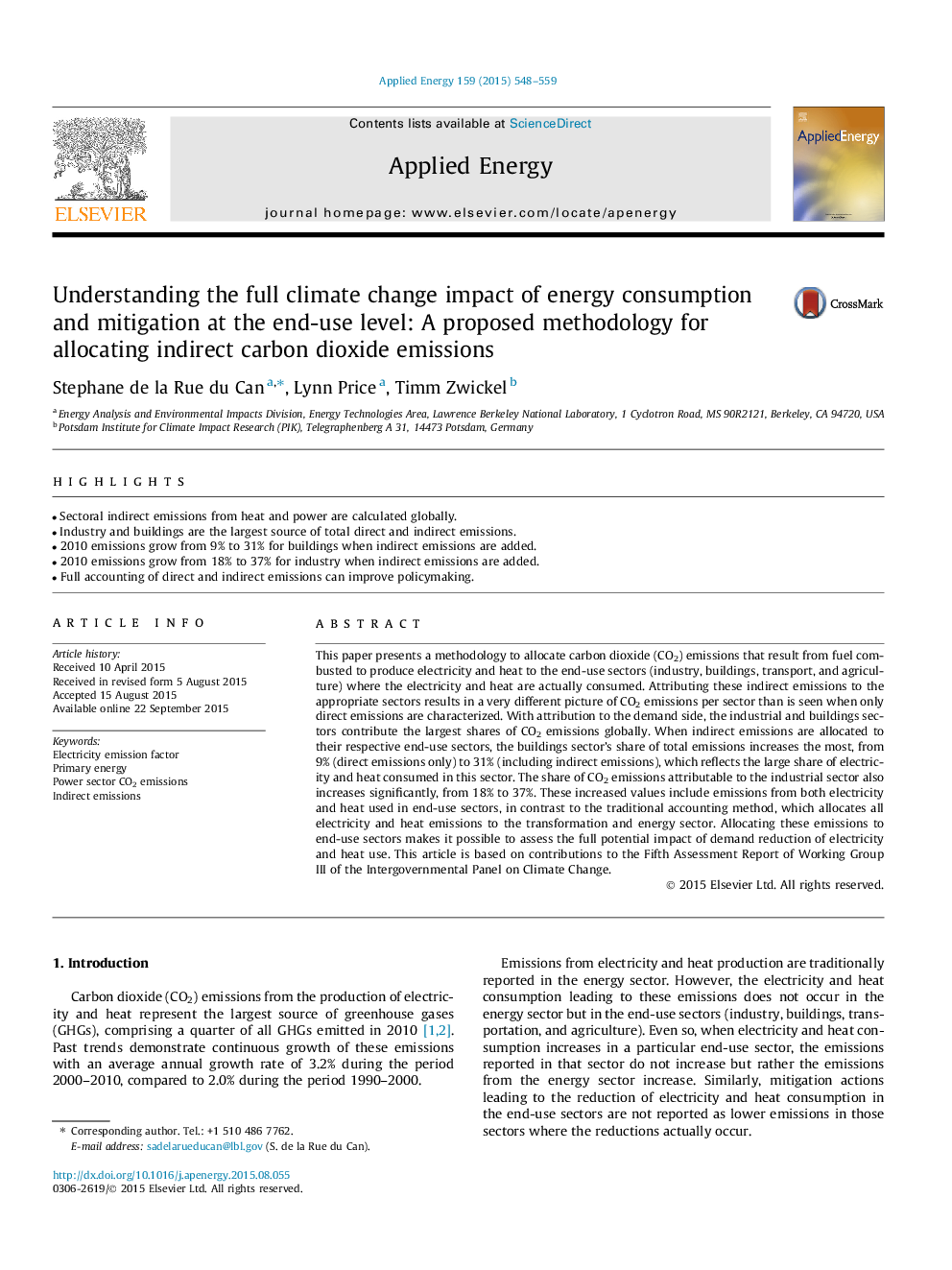| Article ID | Journal | Published Year | Pages | File Type |
|---|---|---|---|---|
| 6685643 | Applied Energy | 2015 | 12 Pages |
Abstract
This paper presents a methodology to allocate carbon dioxide (CO2) emissions that result from fuel combusted to produce electricity and heat to the end-use sectors (industry, buildings, transport, and agriculture) where the electricity and heat are actually consumed. Attributing these indirect emissions to the appropriate sectors results in a very different picture of CO2 emissions per sector than is seen when only direct emissions are characterized. With attribution to the demand side, the industrial and buildings sectors contribute the largest shares of CO2 emissions globally. When indirect emissions are allocated to their respective end-use sectors, the buildings sector's share of total emissions increases the most, from 9% (direct emissions only) to 31% (including indirect emissions), which reflects the large share of electricity and heat consumed in this sector. The share of CO2 emissions attributable to the industrial sector also increases significantly, from 18% to 37%. These increased values include emissions from both electricity and heat used in end-use sectors, in contrast to the traditional accounting method, which allocates all electricity and heat emissions to the transformation and energy sector. Allocating these emissions to end-use sectors makes it possible to assess the full potential impact of demand reduction of electricity and heat use. This article is based on contributions to the Fifth Assessment Report of Working Group III of the Intergovernmental Panel on Climate Change.
Keywords
Related Topics
Physical Sciences and Engineering
Energy
Energy Engineering and Power Technology
Authors
Stephane de la Rue du Can, Lynn Price, Timm Zwickel,
